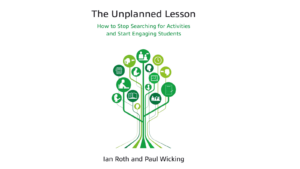The Plain Way for EAP Students to Say It Like It Is
The Vampire Papers
I have read hundreds of university-level essays by non-native speakers of English and at least ninety percent of them have sucked me dry of the will to live. Don’t get me wrong, I admire the people who take on degrees in a foreign language; I couldn’t do it. But that doesn’t alter the fact that so much of their writing is turgid, pretentious and sleep inducing.
Unless you teach EAP you may think I’m exaggerating, so take a look at this sentence from a business studies essay by a Taiwanese post-graduate student: The effects of market-orientation on the long term success of a firm from a particular and noteworthy standpoint, have been shown to be success at maintaining a competitive position. Do you see what I mean? What she wants to say is: Market orientation increases a firm’s competitiveness. However, she is convinced that writing all that twaddle makes her look academic. It’s not her fault – she has been set a very bad example.
English for Gobbledegook Purposes
What is this bad example? Well, in 1996, mathematician Alan Sokal submitted a paper to an academic journal. The paper made statements such as; Scientific research cannot assert a privileged epistemological status with respect to counterhegemonic narratives emanating from dissident or marginalized communities. The journal accepted the paper for publication at which point Alan Sokal revealed that, though the sentences were grammatical, what he had written was complete nonsense.
It became known as ‘the Sokal Hoax’ and it’s important for what it exposes about Academia and its use, or rather abuse of English; it doesn’t matter what you say, so long as it sounds right. That’s what I mean by students being set a bad example.
Justifying Acadamese
In defence of papers which either don’t say anything or simply affirm what is already known, academics say they are a conversation between themselves. The language of this conversation is wordy and colourless because they are not writing for people who live in the short attention span world outside Academia. To express difficult, specialist things accurately academics require a difficult, specialist language. They say that that language (Acadamese), is a requirement. Without it an academic isn’t taken seriously.
EFL Acadamese
EFL university students naturally want to be included in the academic conversation so they set about learning Acadamese. The problem is that many of them are not at a sufficiently high level of English competence and lack the skill to put verbosity into correct English, never mind comprehensible English. They end up writing in a variant of native Acadamese thus making an already poor thing worse. Here are some characteristics of Acadamese. To get a sense of the EFL dialect add poor grammar to the mix.
1. The voice of Mr. Toad
A few essays into their course, a student may lose all humility and acquire the voice of an authority in their subject. It is the voice of Mr. Toad – the pompous windbag from the Wind in the Willows.
If Mr. Toad were an academic, he would use metadiscourse to tell readers what they have read and what they are going to read. You know the sort of thing; it features phrases like ‘we have seen that…’ or ‘we will examine the impact of…’ When metadiscourse is unnecessarily included in an essay it will probably be a sign that a student has had an attack of academic self-importance.
2. Word addiction
There is nothing unique about the grammar of academic English. What makes it special is its jargon. Part of the process of learning something is acquiring its jargon and as the academic essay is a means of displaying how much you have learnt, so students use the jargon for showing off. In particular nominalization (turning verbs and adjectives into bloated nouns) seduces them. Here are some examples;
The performative dimensionality was noted.
This is the normative validity of metaphoricalization.
The result is taxonomic homogenization.
A majority exhibit stochasticity.
3. Grammatical trickery
The EFL student writer knows that passive sentences are harder to construct than active ones, that they take longer to process and make a text more difficult to read. Far from that putting them off, they believe in the gravitas of phrases like ‘data are recorded’, ‘results are analysed’ and ‘concepts are defined’.
Using the passive and avoiding pronouns and names, students can keep out of sight, not through modesty, but because I recorded the data and analysed the results, which would be more direct and true, ‘isn’t academic enough’. Phrasing such as; ‘it is argued that …’ and ‘it has been demonstrated that …’ magically transform mere opinions into weighty deliberation.
The Plain Language Alternative
Introducing students to the notion of Plain Language can put their feet back on the ground. After all, many of them may not really want to become that thing called an ‘academic’. Plain Language gives them permission to be themselves.
What is Plain Language? You could say that there is no such thing. The term (in capital letters) didn’t exist when Cicero discussed the value of honest, straight-forward communication 2,000 years ago, nor when George Orwell did the same thing in 1946 with Politics and the English Language. No, Plain Language is not something special. Plain writing is simply writing what you mean. It is not written speech. It is not shortened versions or dumbed down versions and it doesn’t ban any words. Lots of writers provide lists of tips about how to write plainly. They’re on the Internet.
Plain Thinking
The most important thing is that plain writing is inseparable from plain thinking. However, thinking in words doesn’t come naturally to everyone. Some of us have to learn how to do it. Also, we don’t always think in plain language. A lot of our thoughts just fizzle out.
Plain thinking is the discipline to complete a thought in words. Then it is rethinking and rejecting that thought if it turns out to be false, illogical or contradictory. Rethinking means that students have to use their own intellects to scrutinise their own work. In the process they often discover that precious, clever phrases have to go. The kind of Acadamese I have been describing wouldn’t exist if students put their writing through a process of culling so as to make their ideas stand out brave and clear.
Debunking the Myth
English language course books feature models of good writing and rarely show language students what not to say or write. That’s one reason why exposure to real Acadamese can be a shock. EAP teachers could try giving their students an abstract of a research paper to read. Find a really horrible example that expresses something down-to-Earth in tortuous language (it doesn’t take long). Let your students read the thing and watch their grimaces as they sweat over the obscure sentences. Their morale will probably sink as the abstract confirms their secret belief that they’re stupid.
That’s when they need to be told that the problem is not them, it’s the thing they’re reading. Doesn’t it have a responsibility to communicate clearly? More cheerfully the students will search for a topic sentence and, guided by your questions, will deconstruct bits and pieces of the abstract until they find they have worked it out in language they understand. Basically they will have translated the abstract into Plain English. There will be an ‘aha!’ moment when they discover two things – one, what the hell it’s all about and two, that there’s a possibility that the period of reading, thinking and writing they are embarking upon might not turn out to be so bad after all.




